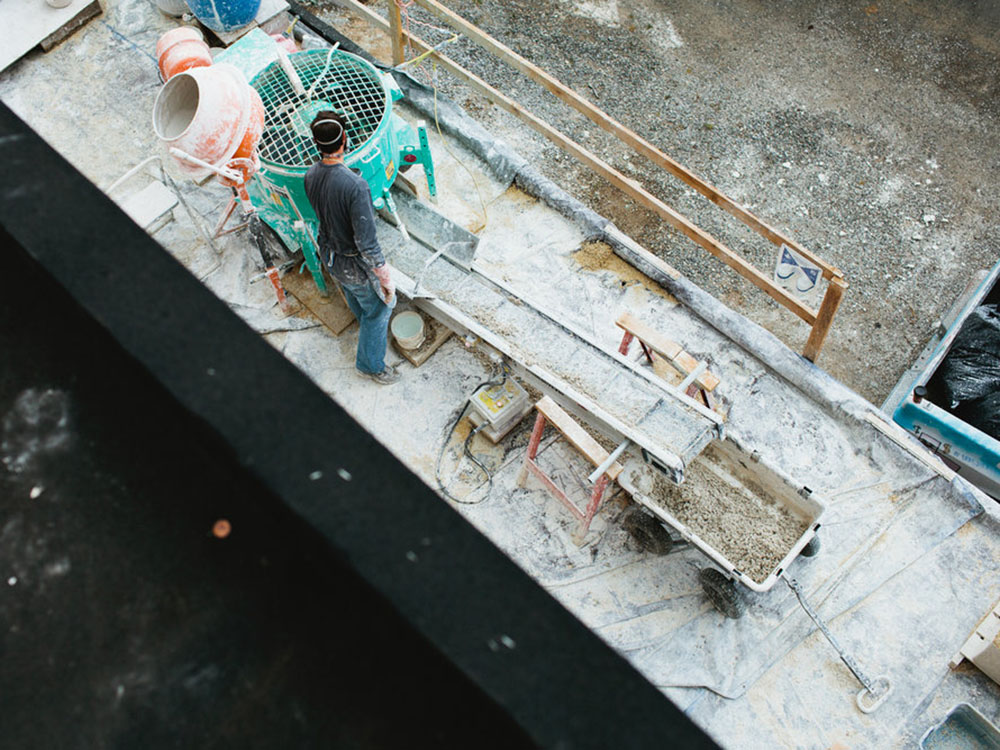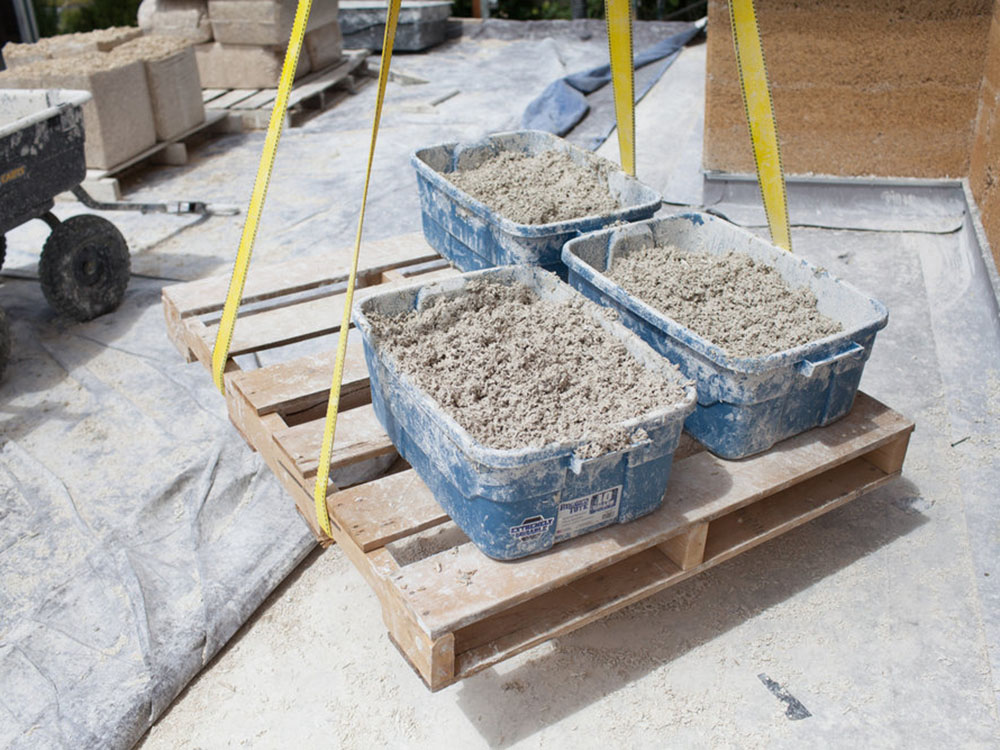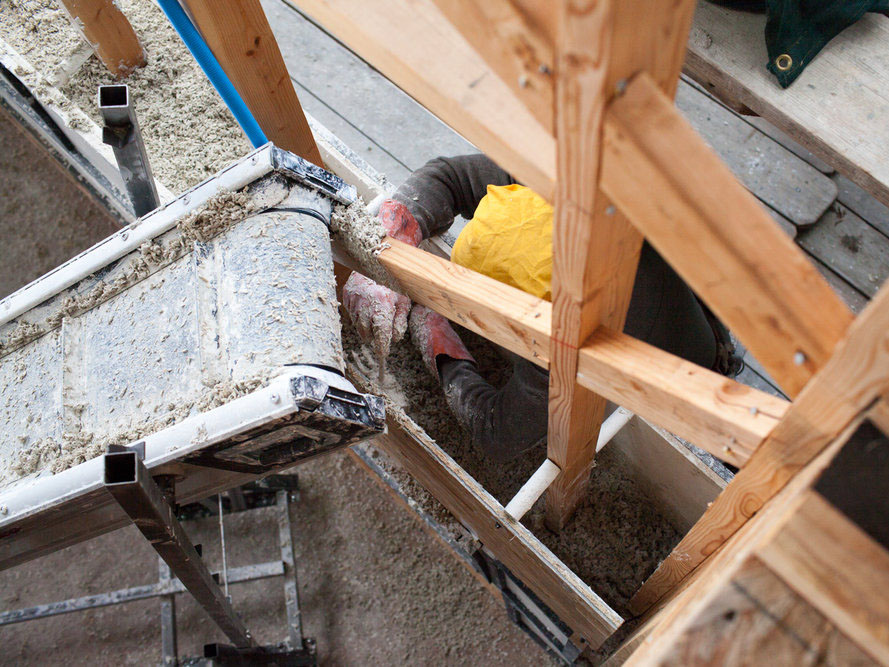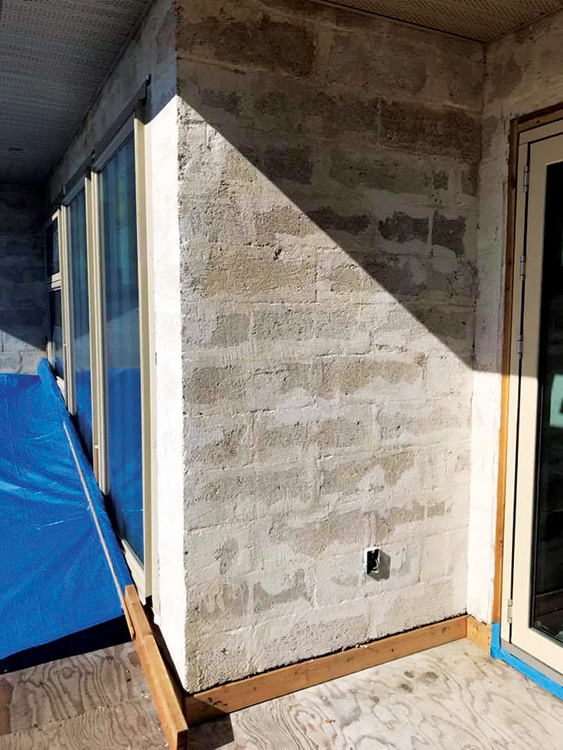Though hempcrete is healthier for both a building’s occupants and the planet, high costs and lack of research stand in the way of widespread acceptance.
Hempcrete, a building material made from the woody core of the hemp plant, could revolutionize sustainable architecture and engineering. If, that is, we can overcome a number of frustrating barriers that stand in the way of widespread implementation.
Made from just a few simple ingredients (often just hemp hurds, water, and lime), hempcrete is resistant to numerous hazards, including pests and fire. Hempcrete buildings even become carbon-negative over time as the walls absorb the carbon dioxide that’s exhaled by occupants.
But hempcrete is labor-intensive and can be expensive from a materials perspective. Perhaps because of this, engineers and architects are still reluctant to use it.

That doesn’t mean we should dismiss hempcrete, according to Matthew Mead, founder of Hempitecture. Hempitecture recently completed work on the Highland Hemp House, an ambitious hempcrete retrofit to a home built in 1969 in Bellingham, Washington.
“Every project that’s well executed creates a precedent, and that precedent can be shared,” Mead says.
As awareness spreads and engineers learn about the potential of hempcrete, many of the barriers to building with hemp are likely to subside.
The Immense Potential of Hempcrete
Like many things related to the plant itself, the benefits of hempcrete are plentiful. They’ve already been proven in Europe, where hempcrete is relatively commonplace. “Europe is light years ahead of us,” Mead says.
Typically, hempcrete is used as an insulator, built around a building’s support structure. Made from the inner core of hemp, or hurd, hempcrete takes on many of the properties of the original plant. Hempcrete is resistant to pests, mold, bacteria, and even fire.

Hempcrete insulates while still being gas permeable, which makes for a healthier home. And its R-value — the factor which measures its ability to reflect energy — makes hempcrete as good or better than other common forms of insulation. Since it comes from a fast-growing plant, advocates argue that hempcrete is far more environmentally sustainable than concrete, a popular choice in modern “green” buildings.
Expense and Labor Still Hindering Adoption
Hempcrete is usually mixed batch-by-batch on a building site by combining hemp hurds with water and a natural binder such as lime. The mixture is poured into forms built around the building’s structure and allowed to dry. The process is slow, labor-intensive, and difficult to fully automate. Additionally, it’s hard to guarantee that every batch of hempcrete will be consistent.
For cost, the biggest factor increasing price is that most hemp hurd needs to be imported from overseas.
“We’re bringing material from the other side of the world,” Mead says. “In fact, shipping costs of the material are often higher than the material itself.”

While Mead argues the long-term savings in health and energy efficiency make up for the cost, price still inhibits would-be hemp builders. Although the supply of U.S.-grown hemp is rapidly increasing, it’s mostly grown for CBD. Mead says the core of these plants is too “knobby” for use in hempcrete.
But the material costs will come down if we encourage farmers to grow other forms of hemp. Mead says dual-purpose plants that can be used for both hemp food and hemp fiber are increasingly common on Canadian hemp farms.
The Future: Mass-Produced Hemp Blocks
In October, Mead attended the International Hemp Building Association‘s 8th annual International Hemp Building Symposium in Brussels, where he says he “was blown away by the progress they’ve made.”
As part of his visit, he toured the IsoHemp factory, which mass produces hundreds of standardized hemp blocks a day. While Mead believes there will always be a role for custom-poured projects, he thinks mass production holds the key to hempcrete’s widespread acceptance.
There are signs of progress in that direction on this side of the Atlantic. Based in Alberta, Canada, Just BioFiber pioneered a modular building system that uses what look like oversized Lego blocks to create structurally sound buildings. The cores of their blocks are made from hempcrete, packed into a proprietary exterior that makes them completely load-bearing and weatherproof. With an abundance of hemp in Canada, the blocks can easily be made from domestically grown plants, which further brings down costs.

“It’s a pre-engineered product so every block is the same,” says Terry Brooks, Just BioFiber’s vice president in charge of business development and sales. “We know how it’s going to perform when you put it in a structure.”
Just Biofiber made headlines recently when their blocks were selected for a self-storage facility in British Columbia, which was created using hemp and other green materials. Projects like this are proving that hemp building blocks are both reliable and much faster to work with than other forms of hempcrete.
“You can stack up a couple of hundred blocks a day,” Brooks says.
Because of that ability, Brooks says his team can build two floors of an average house in 21 days. By comparison, pouring hempcrete at Highland Hemp House took about two months, even with Hempitecture’s experience and innovations in hempcrete pouring techniques.
A Collaborative Effort for Research
The final barrier to hempcrete’s acceptance is overcoming the skepticism of many architects, engineers, and designers. Both Brooks and Mead suggest more research is needed to make hempcrete part of the standard builder’s toolbox.
According to Brooks, “Engineers have three books: wood, concrete, and steel. That’s it.”
To that end, Hempitecture is partnering with design students from Gonzaga University in Spokane, Washington, and an advisor from The Boeing Company, who are performing a study to document hempcrete’s fire resistance. While many similar studies have already been performed in Europe, differing systems of measurement make it difficult to use the results of those studies in the U.S.
Mead hopes hemp building advocates will work together to share their research and further the field, until hempcrete is considered fully “code ready.”
“There has to be some means to pull people together, no one should be working in a silo,” he says. “That’s really going to take a collaborative effort.”

